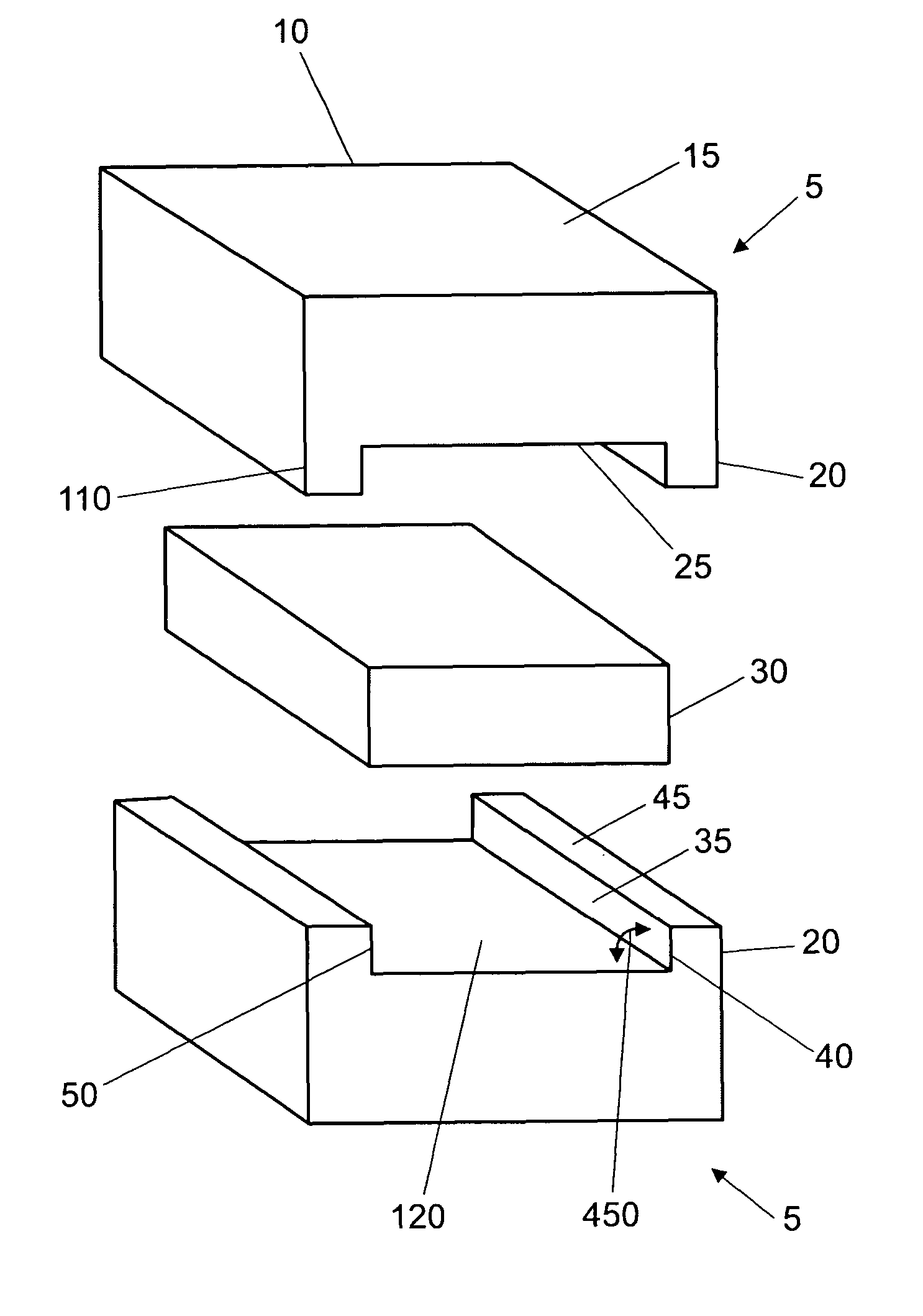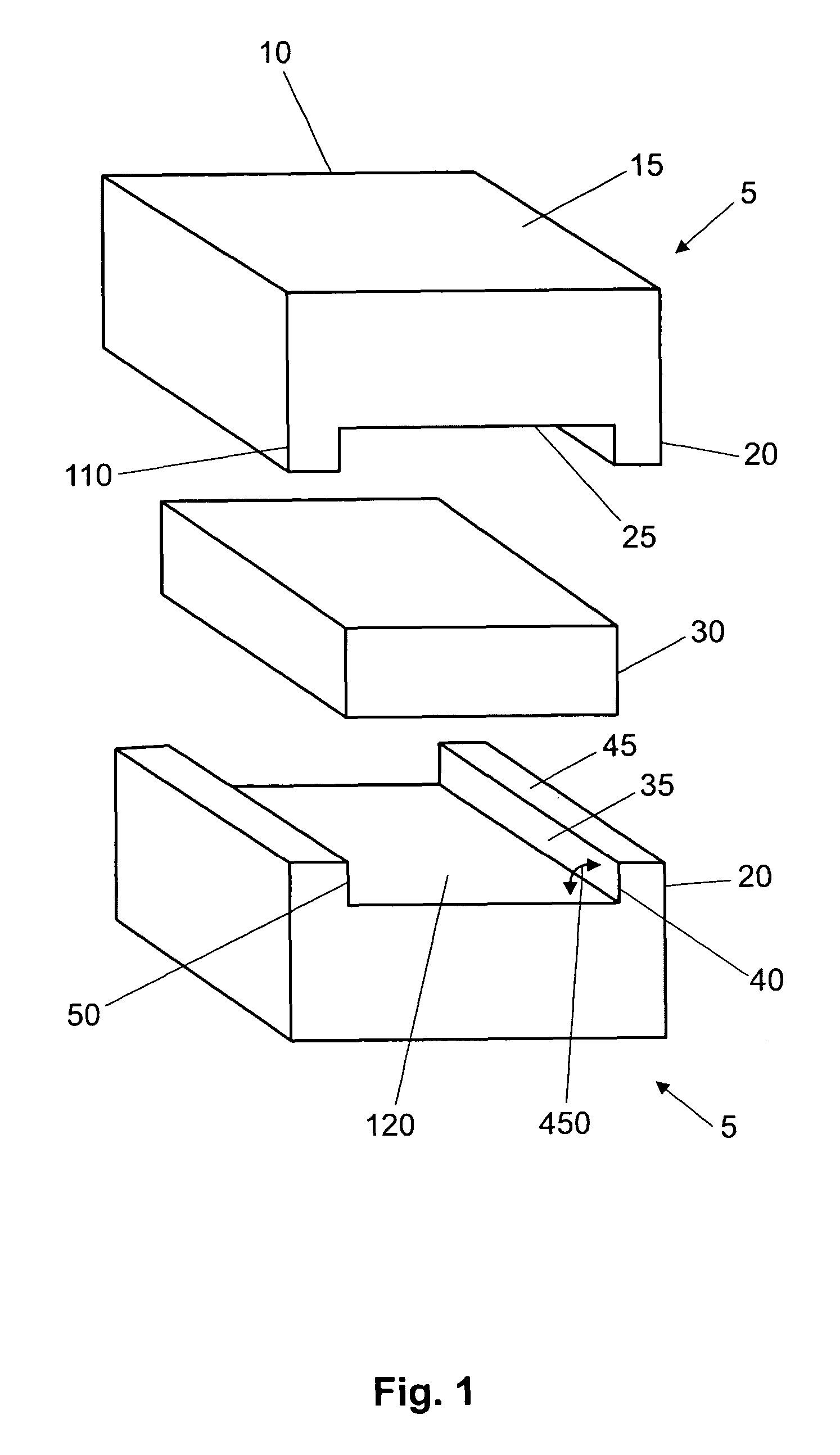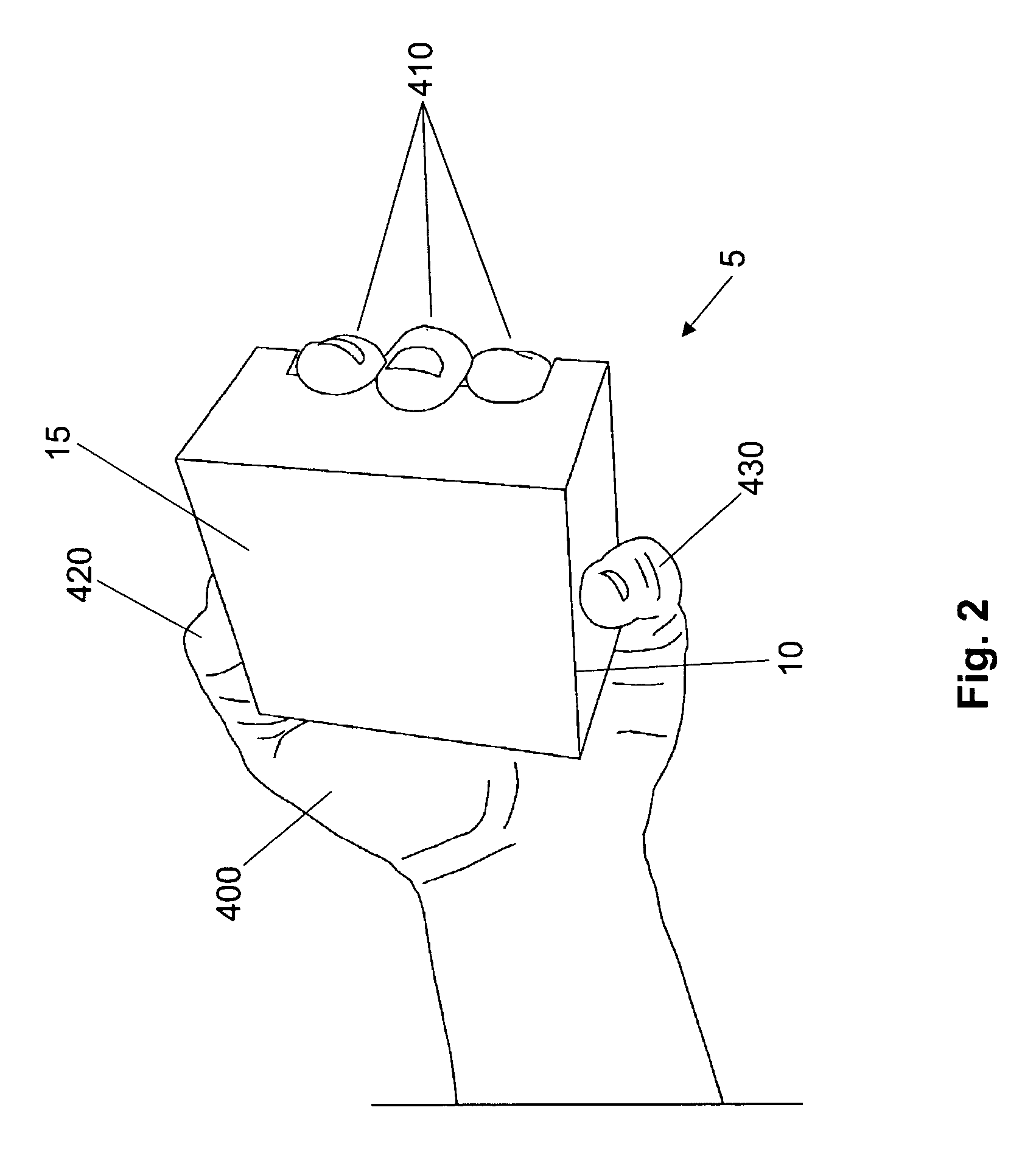Soap bar or substance application bar
a soap bar and substance technology, applied in the field of substance application bars, can solve the problems of difficult to grasp firmly with the hands, add to the difficulty and expense of manufacturing, and the surface of soap bars is often extremely slippery, so as to avoid waste and easy to grasp firmly without slipping
- Summary
- Abstract
- Description
- Claims
- Application Information
AI Technical Summary
Benefits of technology
Problems solved by technology
Method used
Image
Examples
example 1
An Assembly of Substance Application Bars According to the Invention
[0068]The accompanying FIG. 9 illustrates an exemplary assembly of substance application bars constructed according to the present invention. Substance application bars 205, 210 were formed from a combination of saponified (olive, castor, palm and coconut) oils, vegetable glycerin, soybean oil, essential oils, and FD&C color. Edges 300 and 310 define surface 500 of application bar 205. Surface 500 was made to measure about 3 inches in length and 3 inches in width. Edges 300, 320, 330, 340, and 370 define surface 520. Edge 300 was made to measure about 3 inches in length. Edge 320 was made to measure about 1 7 / 16 inches, making the whole assembly about 2⅞ inches in height. Edge 330 was made to measure about ⅜ of an inch in length, while edge 340 was made to measure about 2¼ inches in length. Edge 370 was made to measure about 1 inch in height. The bar 240 was formed from a combination of saponified (olive, castor, pa...
PUM
| Property | Measurement | Unit |
|---|---|---|
| angle | aaaaa | aaaaa |
| height | aaaaa | aaaaa |
| angle | aaaaa | aaaaa |
Abstract
Description
Claims
Application Information
 Login to View More
Login to View More - R&D
- Intellectual Property
- Life Sciences
- Materials
- Tech Scout
- Unparalleled Data Quality
- Higher Quality Content
- 60% Fewer Hallucinations
Browse by: Latest US Patents, China's latest patents, Technical Efficacy Thesaurus, Application Domain, Technology Topic, Popular Technical Reports.
© 2025 PatSnap. All rights reserved.Legal|Privacy policy|Modern Slavery Act Transparency Statement|Sitemap|About US| Contact US: help@patsnap.com



